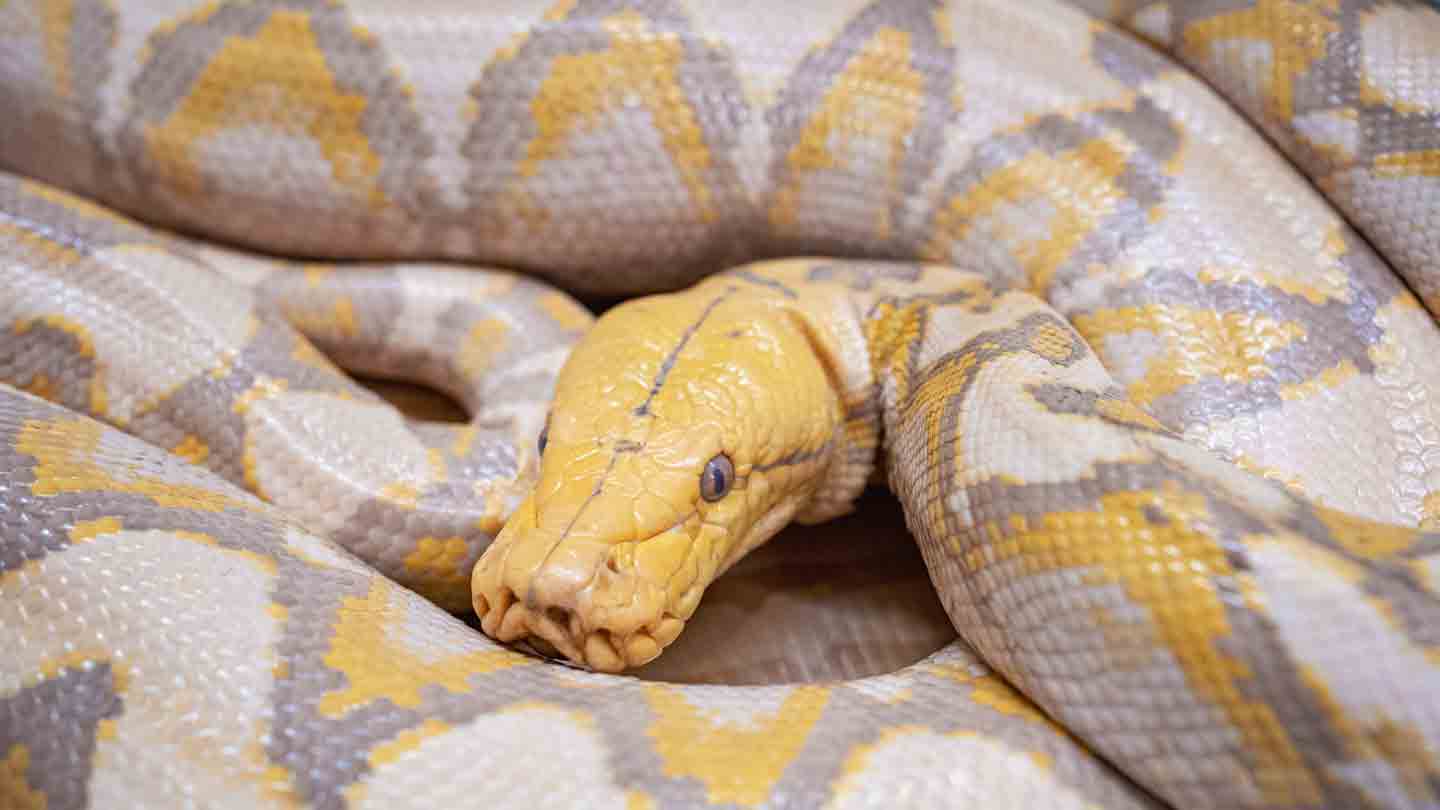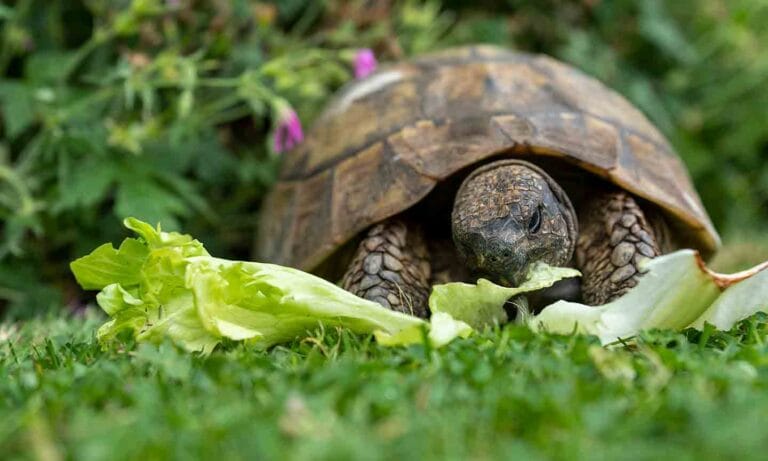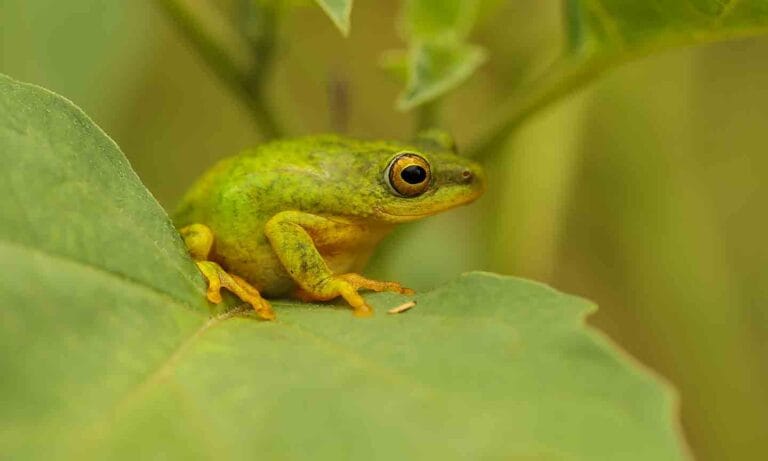Snakes, like other reptiles, can make fascinating pets—but figuring out what to feed them can be confusing. Do you need to buy live prey and put them in the enclosure with your snake? Does a snake’s diet require supplementation? And how do snakes drink water? These are all common questions asked by those who are new to snake care.
Check out the short guide below to get answers to all of the most important questions about feeding snakes.
In This Guide
7 Common Foods to Feed a Pet Snake
Snakes are carnivores, so they need to eat prey animals. Pet snakes typically feed on animals like:
- Rodents (e.g., baby mice and rats, adult mice and rats)
- Chicks
- Eggs
- Invertebrates, insects, worms (e.g., crickets, slugs, snails, earthworms)
- Fish
- Amphibians (e.g., toads, frogs)
- Reptiles (e.g., geckos, small snakes)
Snake Diet Considerations
To figure out the optimal diet for your pet, first focus on what species of snake you have. A king snake’s dietary needs will differ from a corn snake’s, garter snake’s or rat snake’s, for example.
No matter which food your snake needs, it’s important to feed them high-quality, healthy prey animals. “The prey item should have been in good health before it was killed. It should not be heavily parasitized,” says Dr. Karen Rosenthal, DVM, MS, MS, a veterinarian, the VP of Medical Education, and an educator of exotic animal medicine at Veterinary Emergency Group in White Plains, New York.
Live vs. Frozen Prey
It’s best to feed your snake prey that’s already dead, Dr. Rosenthal explains, because live prey can attack and cause severe bite wounds.
“As a doctor in emergency medicine, one of the most common reasons snakes are brought in is because they have been [injured] by the item they were supposed to eat,” she says. “It is not uncommon for prey to attack the face of the snake, causing irreversible damage to the face,” including their eyes and nares (aka a snake’s version of nostrils, two of which sit on the outside of their face and two of which are located on the roof of their mouth).
In addition to preventing injuries, feeding your snake dead prey reduces the risk of parasites. You can buy freshly killed or frozen prey—just be sure to thaw frozen prey completely before giving it to your snake.
However, some snakes might only go after living, moving prey. This may happen if they were fed live prey by their previous caretaker. If you have a snake who refuses to eat dead prey, you’ll need to give them live prey until you can train them to go after dead prey. Work with an exotic veterinarian to receive expert guidance on how to transition a snake from live prey to frozen or freshly killed prey.
Varying the Diet
It might not be necessary to vary your snake’s diet, especially if they’re getting the complete nutrition they need from frozen rodents. But you can provide variety in your pet’s diet by switching between different prey animals, such as rodents and chicks.
Remember to always stick to what your particular snake can and should eat based on their species, as different types of snakes have differing needs.
Size of Prey
Consider your snake’s age and size to provide meals that they’ll be able to consume easily. For example, juvenile snakes won’t be able to eat the same size prey as larger snakes.
“Younger or smaller snakes need smaller prey items like pinkies,” says Dr. Benjamin Berriman, DVM, lead veterinarian at Banfield Pet Hospital, who works at Banfield locations in the Phoenix, Arizona, area. Pinkies are young mice, typically 1-4 days old; they get their name due to the pinkness of their skin, which hasn’t grown a coat of fur yet.
“As snakes continue to grow and develop, you can increase the size of prey items to things like adult mice or rats,” depending on your adult snake’s size and species, Dr. Berriman says.

What Snakes Can’t Eat
Because snakes are carnivores, they shouldn’t be fed:
- Plants
- Processed food
- Grains
- Vegetables
- Fruits
Foods like these that are not on a snake’s natural menu can result in problems such as digestive issues, malnutrition, gastrointestinal upset, toxicity and dental problems.
How To Feed Your Snake
Feeding your snake properly involves a routine that includes preparing the meal and putting your snake in an enclosure specifically for eating.
1Prepare Their Food
If you store your snake’s prey in your freezer, be sure it’s completely thawed before giving it to your snake. Allow the prey to thaw naturally by taking it out of the freezer and placing it in your refrigerator about 24-48 hours in advance of mealtime. Then, take it out of the refrigerator to let it come up to room temperature several hours before feeding time.
Dr. Berriman advises against putting frozen prey in the microwave or in hot water to thaw it. “This can cause bacterial growth and inconsistent thawing through the prey item,” he says.
2 Move Your Snake to Their Feeding Enclosure
Provided that your snake doesn’t get stressed when handled or moved, you can set up a separate feeding enclosure.
“I personally like feeding snakes in a separate feeding enclosure. Snakes learn routines and will learn when they are moved into their feeding enclosure that it is time to eat. This helps prevent accidental bites from your pet snake when you are handling them in their normal enclosure,” says Dr. Berriman.
Feeding in a separate container can also prevent your snake from accidentally eating substrate.
However, some pet parents prefer feeding their snakes in their main enclosures, without moving them for feedings. See what works best for you and your unique snake.
3Serve Their Food
Use feeding tongs to place the prey into the enclosure. Never use your bare hands; doing so puts you at risk of being mistaken for dinner and bitten accordingly.
4Return Your Snake to Their Enclosure
If you put your snake in a separate enclosure, gently transfer them back to their cage after waiting some time to ensure they don’t regurgitate from being handled too soon.
Dr. Rosenthal recommends waiting about an hour, saying, “If you see a bulge in the upper part of the throat, don't move them until that lump is no longer obvious.”
Rather than picking up your snake, you can carry the feeding container to their cage to let them slither in on their own.
5Clean Up
After the prey has thawed, do not freeze it again if your snake doesn’t eat it. Discard any dead prey that your snake doesn’t eat within 30 minutes, unless you know for certain that your snake typically takes longer than that to eat. No matter what, you don’t want it to spoil by leaving it in the enclosure for too long.
If using a separate feeding container, you can clean it with a reptile-safe disinfectant so it will be hygienic and ready for the next feeding. If your snake ate in their main enclosure, remove any substrate that got dirty.
Snake Feeding Guidelines
So, how much should you feed your snake? That’s a complex question. The amount of food your snake needs depends on their species, age and health. “The key is to keep track of your snake’s weight, making sure it’s stable or increasing,” says Dr. Berriman. If you have questions about your unique snake’s dietary needs, ask your veterinarian.
Another factor in feeding: Your snake will eat less during certain periods than others. “Some snakes may not eat during the colder months,” says Dr. Rosenthal. “Also, snakes typically should not be fed as they are going through a shed. Even voracious eaters will not eat during the shed period.” Shedding is a natural process during which snakes shed their old skin. This can occur several times a year, depending on the snake’s age, species and environmental conditions.
How often do snakes need to be fed? Again, frequency of feeding will also depend on factors like your snake’s species, size and age. Generally, younger snakes will eat more often, such as twice a week, while adults might need to eat once every two weeks.
“The best guide is to know your species. Read about the snake you have chosen to live with, and know the average weight to hit depending on age. That way, you will know if you are feeding too many calories too often,” says Dr. Rosenthal.
Do Snakes Need Water?
Your snake should have access to water at all times. Thoroughly clean the bowl and refill it with fresh water daily.
A shallow, sturdy reptile bowl can provide your pet with water to drink and soak in without the risk of drowning. Again, consider your snake’s species, as this will help you buy the right type of water bowl.
My Snake Won’t Eat. What’s Wrong?
A snake might stop eating for various reasons, from stress to medical problems. If your snake stops eating, don’t delay seeing a veterinarian for a diagnosis and treatment. Here are some common reasons a pet snake may seem to lose their appetite:
- Incorrect enclosure: Your snake’s enclosure should be set up to meet their specific needs. Maintain the appropriate temperature and humidity for your snake. Add the right substrate, along with hiding places.
- Health concerns: Health issues, such as infections, parasites and diseases, can cause a snake to stop eating. These should be addressed with the help of a vet who specializes in exotic pets like snakes.
- Improperly transitioning to a new food: According to Dr. Rosenthal, changes in diet (such as from live to dead prey) can be difficult for some snakes, and snakes can end up in the emergency veterinary hospital when they refuse to eat. If you need to make this switch, work with a veterinarian who’s knowledgeable about snakes so your pet will never miss a meal.
FAQs About Feeding Pet Snakes
Q:
Do snakes need vitamins?
Q:
Do snakes eat fruits and vegetables?
The best way to know what to feed your snake is by researching the species and working with your veterinarian. As you observe and care for your snake daily, you’ll also be able to pick up on signs that something is wrong (e.g., your snake isn’t eating as much as they should) and requires veterinary attention.
Expert input provided by: Dr. Karen Rosenthal, DVM, MS (zoology), MS (foresight); VP of Medical Education/Educator- Exotic Pets; Veterinary Emergency Group, White Plains, NY.; and Dr. Ben Berriman, DVM, Lead Veterinarian Banfield Pet Hospital in the Phoenix, AZ, area.
Share:















